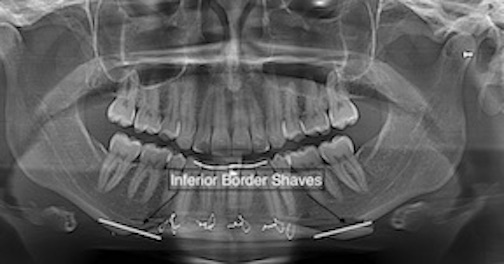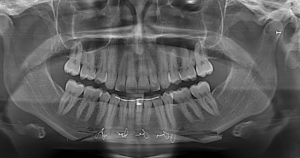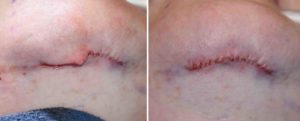Background: Chin ptosis occurs from a variety of reasons, most of which are iatrogenic…meaning it coms from prior chin surgery. The most common form of aesthetic chin surgery that leads to soft tissue pad ptosis is reversal of a prior augmentation. Whether this is the removal of an implant or the partial or total reversal of a sliding genioplasty, any maneuver that causes a loss of volume from an expanded soft tissue chin pad incurs that risk. This does not mean it will always happen as there many variables which affect the likelihood of its occurrence.
When chin ptosis occurs there is always a static component and there may or may to be a dynamic one. Static chin ptosis is when the chin pad is seen to be below the level of the inferior border of the chin bone at rest. A visible skin crease exists which may be at the typical location of the submental crease or anterior to it. Dynamic chin ptosis is when the static chin ptosis becomes magnified with smiling and pulls down further than what it exists at rest. In either one it is very difficult to get it corrected by any form of intraoral resuspension …unless a chin implant is concurrently placed onto which the lifted soft tissue had can be supported.
One of the more rare types of sliding genioplasty complications is a fracture of the lateral wing segment. By virtue of the angle by which a sliding genioplasty is done the downfractured bone segment becomes thinner at it extends outward from the midline. Incomplete osteotomy cuts and premature attempts to downfracture it can lead to a fracture of the thinner wing. While this fractured bone segment will typically heal, it may do so with an irregularity of the inferior border of the jawline…as access to reposition this bone segment when it occurs is limited from an intraoral approach.
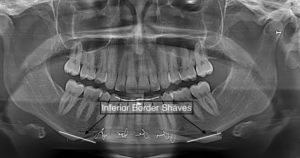
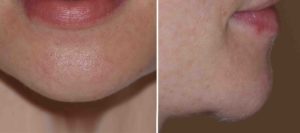
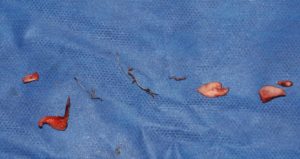
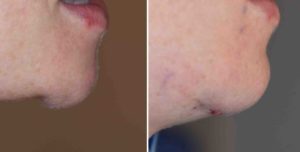
The sliding genioplasty is not a common reason for chin ptosis, probably because setback genioplastigs are infrequently done. But it can create chin ptosis as well as implant removal as the reduction of hard tissue support of the expanded chin pad leaves a bone:soft tissue mismatch.
Case Highlights:
1) Irregularities of the inferior order of the lower jaw, regardless of the cause, can be treated by inferior border shaves through a submental approach.
2) Chin ptosis that results from implant removal or sliding genioplasty reversals often requires a submental excisional approach to be successfully treated.
3) The key to the submental tuck in the treatment of chin ptosis is how to manage the mentalis muscle and to do the skin and fat excision on the chin side of the incision.
Dr. Barry Eppley
Indianapolis, Indiana

